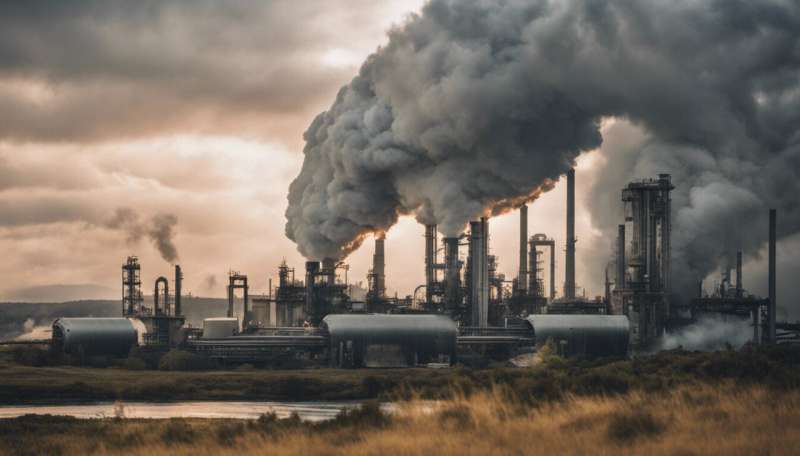This article has been reviewed according to Science X's editorial process and policies. Editors have highlighted the following attributes while ensuring the content's credibility:
fact-checked
trusted source
proofread
We know that carbon capture from the atmosphere is possible. But how do we get there?

The UN's Intergovernmental Panel on Climate Change has now made its message very clear. Our actions during the next seven years will influence the development of the global climate for the next one thousand. This means that we must make use of all measures available to limit the rise in global temperatures.
In a DAC facility, carbon dioxide is effectively 'vacuumed' from the atmosphere, thus reducing its concentration in the air and mitigating its greenhouse effect. DAC technology is useful because it has the potential to help remove CO2 directly from the air, and not simply arrest the emission of CO2 from fossil sources. However, DAC facilities also present a challenge because they have to process large volumes of air in order to achieve a discernible impact, thus making the process expensive.
"The concentration of carbon dioxide in the atmosphere is only 0.04 percent," says Jon Hovland, who is a Chief Research Scientist at SINTEF Industry. "Because of this low concentration, a lot of energy is needed to extract the gas, and facilities require a large area. This makes the cost per ton of captured CO2 very high," he says.
What do we need to do to roll out DAC in Norway?
Around the globe, we know of about 18 test and demonstration facilities for DAC, operating with a combined annual capture capacity of about 9,000 tons of CO2. The largest facility currently in operation is in Iceland, capable of capturing up to 4,000 tons of the gas annually.
In Norway there are many factors in favor of the country being able to develop a DAC infrastructure. Norway has major volumes of geological storage capacity on its continental shelf, favorable climatic conditions and high levels of expertise in the fields of carbon capture and storage (CCS).
Many Norwegian companies are in the process of evaluating or actively planning the construction of DAC facilities based either on technology developed entirely in Norway or in collaboration with overseas companies. So, what is needed for these plans to become a reality?
SINTEF has carried out a study for the Norwegian Environment Agency and has concluded that more research is needed into DAC technology. A key part of such work will be to learn from our current experience in terms of keeping energy consumption and costs as low as possible. As the technology matures, construction and operational costs will fall, and energy costs will constitute an ever-increasing proportion of total costs because energy consumption is directly linked to the volume of CO2 that is captured.
In its own report, the Environment Agency points out that DAC technology will require operational subsidies if negative emissions are not to be assessed using other instruments. Such instruments may include the Norwegian state 'mirroring' the existing CO2 tax with a reverse tax per ton of CO2. In such a scenario, companies will be paid for each ton of CO2 they remove from the atmosphere. Such a measure can be combined with funding for technology development and perhaps also for the establishment of a transport and storage infrastructure.
"DAC technology offers major potential, but it is important to emphasize that it will be complementary, and not an alternative, to measures such as CCS technologies being applied to achieve the reduction of CO2 and other greenhouse gases in the atmosphere," says Hovland.
Provided by Norwegian University of Science and Technology




















